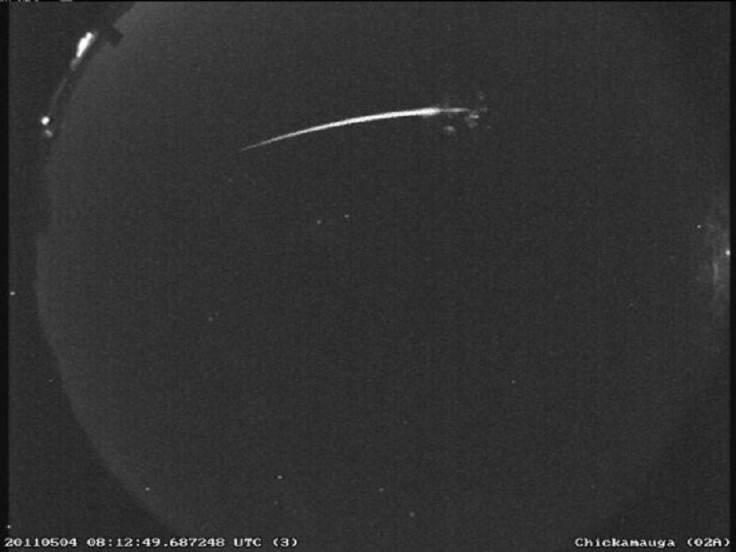Eta Aquariid Meteor Shower: Origin And Timing, How To Watch The Celestial Show
KEY POINTS
- This year's Eta Aquarids peak in the pre-dawn hours between May 4 and May 5
- There is no special equipment needed to watch the meteor shower
- The sky event can be seen from both the Northern and Southern Hemisphere
Sky watchers are in for a treat this week as the Eta Aquariids (also Aquarids) are set to make their annual celestial display. Those who wish to witness the meteor shower don't need to bring any special equipment but, they might want to bring something to lie down on as well as a bit of patience.
How To Watch The Eta Aquariids
According to the American Meteor Society, the Eta Aquariids will peak between May 4 and May 5. The good news is that sky watchers will not need any special equipment to watch this event but, as always, it is best to have patience since meteors tend to come in short bursts with some pauses in between.
Since the waxing gibbous Moon will be 91% full and may drown out the action during the night hours, the best viewing time would be the predawn hours after the Moon has set but before the Sun has risen. Those interested in watching the display can use a location-based moonrise/moonset calculator to determine the best time for viewing in their location.
Those who want to witness the Eta Aquariids should find an area that is far from a city, or street lights, with an open view of the sky. It is good to bring either lawn chairs, sleeping bags or blankets. It is also best to dress properly and comfortably since they may have to wait for quite a while to view the show.
It is not like you just walk in and the show begins. Lie flat on your backs and give your eyes a bit of time to adjust to the darkness. Make sure all unecessary lights, such as those from smartphones, are off. After about 20 to 30 minutes, the eyes will become accustomed to the darkness and begin to see the meteors. According to NASA, the meteors may come in from any direction.
Because the Eta Aquariids are fast meteors that appear as "earthgrazers," or ones that appear to skim the surface of the Earth at the horizon, sky watchers may see them with long "trains" in their wake.

Although the meteor shower will be visible in both the Northern and Southern Hemisphere, the Southern Hemisphere is a more preferable viewing spot. There, the Eta Aquariid meteor shower is one of the best sky events of the year and, people may expect to see 20 to 40 meteors per hour.
Those in the Northern Hemisphere may expect to witness about 10 to 30 meteors per hour.
Eta Aquariids And Comet Halley
The Eta Aquariids are active every year from mid-April to late-May. It is so named after the Aquarius constellation because that is the part of the sky where the meteor shower appears to emerge from.
The Eta Aquariids are pieces of space debris from comet Halley that interact with our atmosphere. Every time that the comet passes our solar system, it sheds a layer of dust, ice and rock, with some of the grains colliding with the Earth's atmosphere and ending up as the Eta Aquariids in May and the Orionids in October.
According to NASA, the last time that comet Halley was seen by observers was in 1986. It is not expected to enter the inner solar system again until 2061.
© Copyright IBTimes 2024. All rights reserved.






















